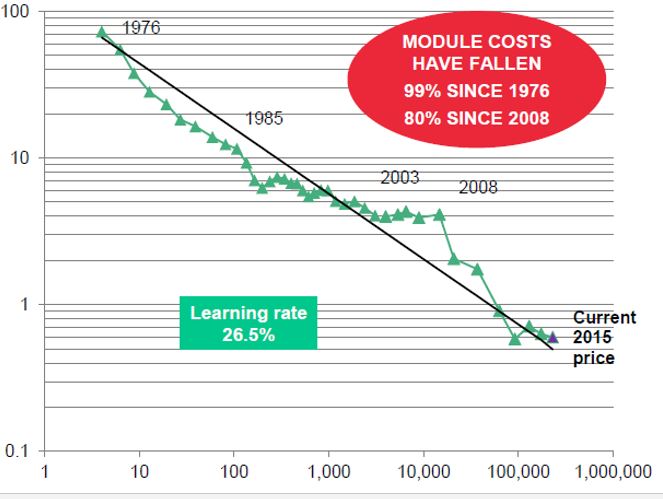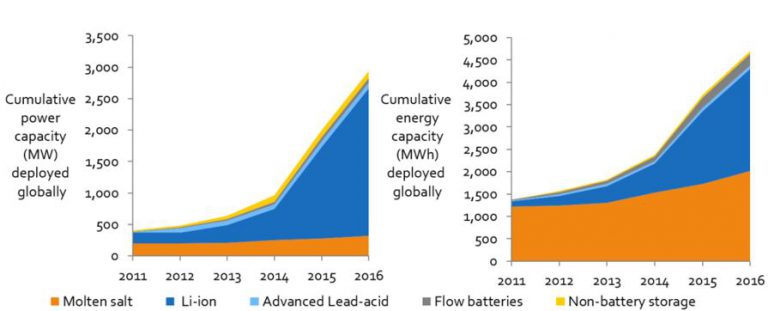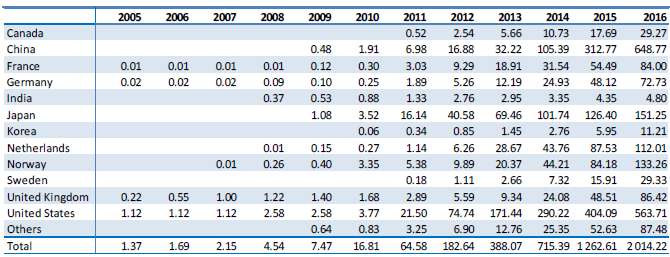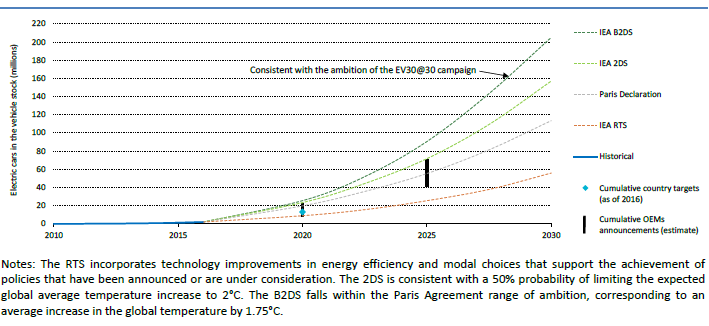Menu
Over the past decades, the global energy landscape has tremendously changed due to the rapid development of technology and information. In the energy sector, the fast-changing transition is driven by the emergence of numerous energy technologies that bring new value to energy development and fundamentally change the global market. These technologies are groundbreaking; contributes to the global efforts in mitigating climate change and have major impacts on the global socio-economy.
The following is the list of most disruptive technologies in the energy sector:
1. Solar PV
Solar photovoltaics (PV) is one of the fastest-growing energy technologies during the past decade. The use of solar PV as an alternative in generating electricity is due to these advantages: the wide range of scalability, the simplicity of its infrastructure, compatibility with household use, universal presence, practicality for buildings but also as a standalone system.
Solar PV experienced a remarkable development within a period of 10 years, increasing from only 8.7 GW in 2007 to 384 GW in 2017. In 2017, the three largest installations was from Asia, where China contributed 53 GW, India at 9.6 GW and Japan at 7 GW (IRENA, 2018).
Following the higher demand and rapid development of this technology, the price of solar PV plunged significantly between 1970 and 2015. As indicated in Figure 2, solar PV price fell 99% since 1976 and 80% since 2008 (BNEF, 2015). Recently, in May 2018, the average price for polysilicon was 0.295 USD/watt, for high-efficiency poly was 0.344 USD/watt, for mono was 0.368 USD/watt and for thin-film was 0.315 USD/watt (PVinsight, 2018). With the expected lower price in upcoming years, solar PV will be implemented in many power systems around the world.

Solar PV Prices from 1970-2015 (Bloomberg New Energy Finance, 2015)
2. Battery Storage
Battery as energy storage has many advantages such as flexibility, scalability, and applicability. For that reason, the battery is becoming a new trend in renewable energy (RE) development, where researches and commercialisation of battery are spreading everywhere.
In terms of application, the lithium-ion battery is the most-used type of battery, representing 97% of all energy storage capacity in 2016 (GTM Research and ESA’s U.S Energy Storage Monitor 2016 Year in Review). The global success of battery industrialisation and commercialisation are indicated in its development and decrease of price.

Last Five Years Data on Global Energy Storage Capacity (Lux Research, 2016)
For the last five years, the price of lithium-ion battery has been decreasing exponentially. Today, the price is less than USD 300/kWh, compared to USD 1000/kWh in 2010. The trend is expected to reach USD 100/kWh by 2030.

Historical and Projection of Lithium Ion’s Price [BNEF, 2016 (left); BCG, 2010 (right)
3. Electric Vehicles
Since 2012, electric vehicles (EV) have been used worldwide. EV is projected to disrupt current energy landscape in various sectors, by transforming power utilities, after-sales service of the automotive industry, oil and gas industries, automotive markets and many others. With the inclusion of solar PV rooftop, advanced battery technology and renewable charging infrastructure, EV is the top enablers to reduce more emission.
EV has been sold with super-quick charging solutions to many countries in Europe and North America since 2012 (Cambridge Service Alliance, 2015). Until 2015, United States of America has the largest stock of electric cars. However, China then surpassed it by doubling its EV stock thus flooding the global market with 650 thousand EV units.

Electric Vehicle’s Stocks based on countries, 2005-2016 (thousands)
Many studies projected the exponential growth of EV. According to IEA’s Global EV Outlook, the technology will grow to 120 million units in 2030, under the Paris Declaration’s scenario.

EV’s Future Projections in IEA’s Scenarios up to 2030, (IEA, 2017)
Indeed, the three technologies mentioned above are the most disruptive for the energy sector, and will significantly change the global—including ASEAN–energy system in the near future. ASEAN shall be prepared to adapt to these technologies. These will benefit ASEAN in many ways, including to achieve their regional aspirational target on renewable energy and energy efficiency as stated in their ASEAN Plan of Action for Energy Cooperation (APAEC) 2016-2025. Moreover, the ASEAN Member States will also benefit from those technologies in reaching their Paris Agreement targets and energy-related national targets. Since the APAEC 2016-2025 Phase II: 2020-2025 will soon be prepared, ASEAN is suggested to focus on these disruptive technologies for their five-year plan.
References
Featured photo credit: Wharton University, Pennsylvania
